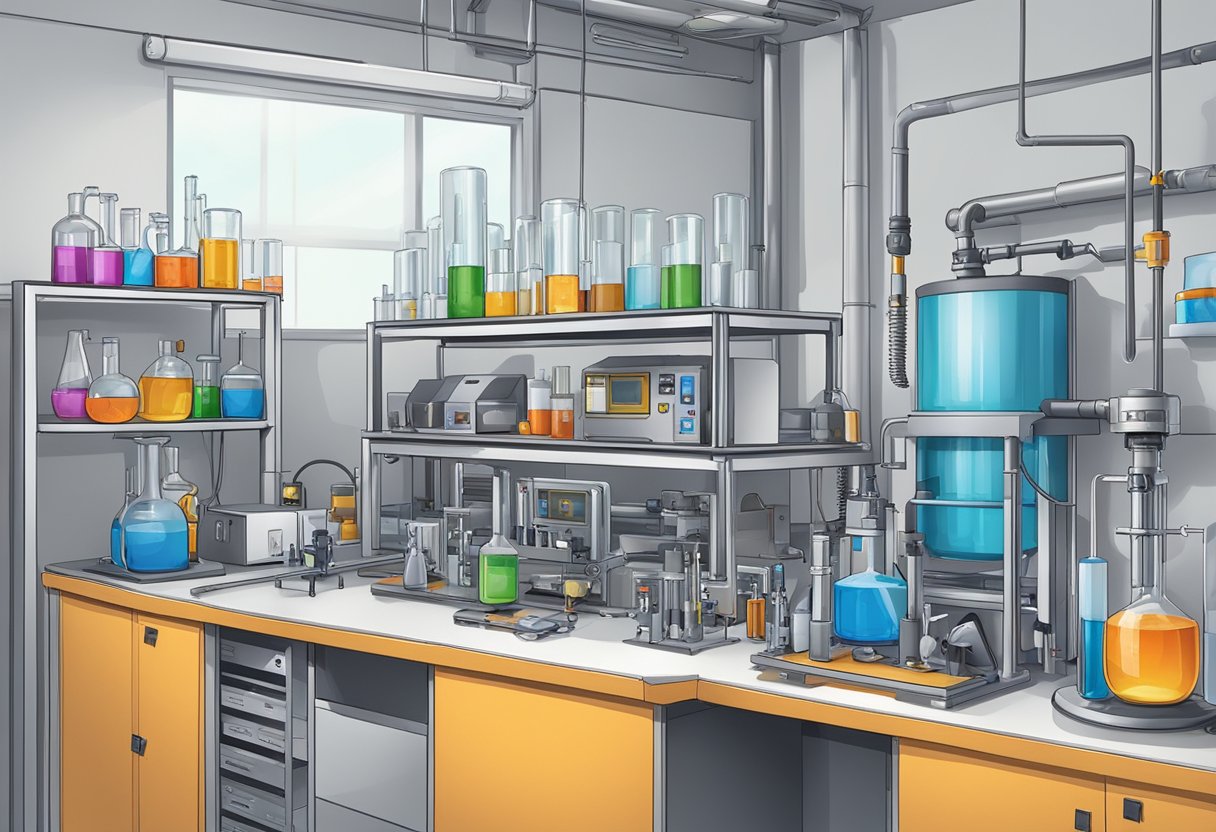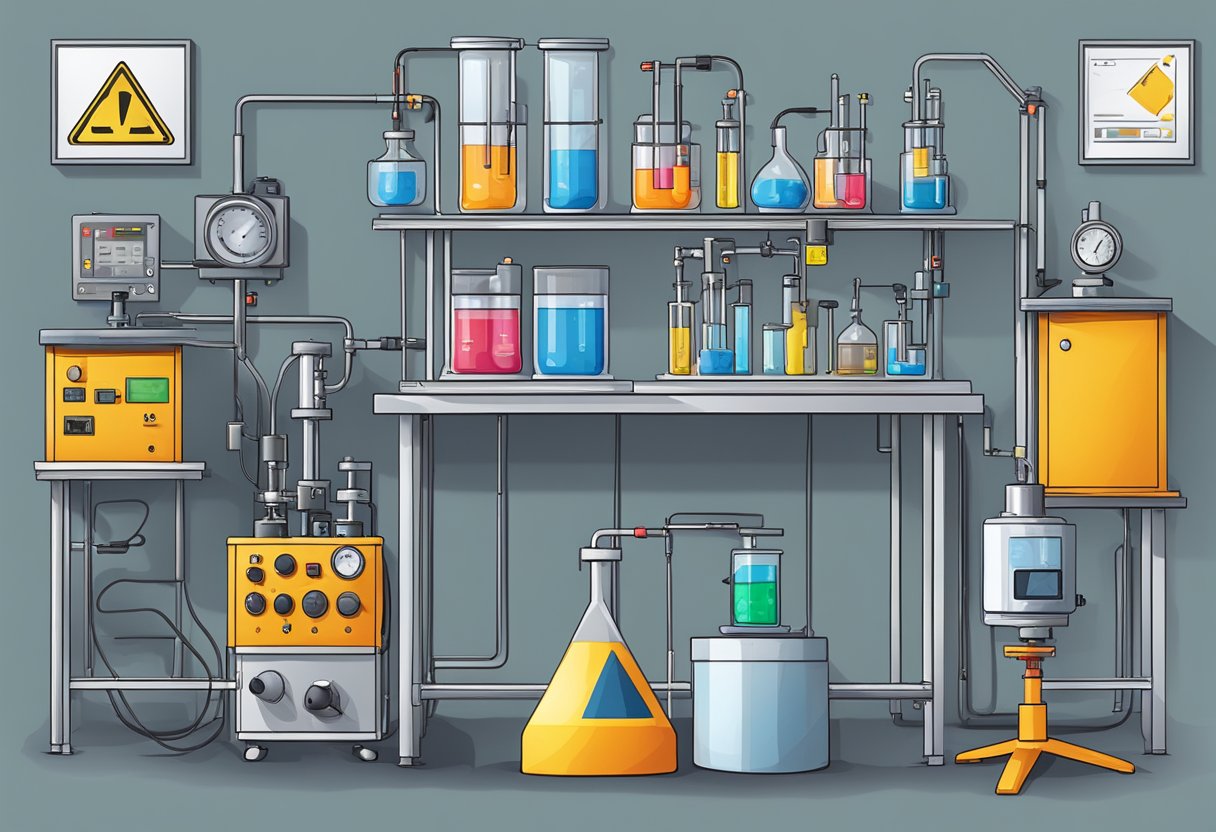Thermal Hazards Testing: Understanding the Basics
Thermal hazards testing is an essential process for evaluating the safety of materials and products that are exposed to high temperatures. This testing is used to identify the potential risks associated with exothermic reactions, which can lead to fires, explosions, and other hazards. By conducting thermal hazards testing, you can identify potential risks and take steps to mitigate them before they become a problem.

There are many different types of thermal hazards testing available, including calorimetry, differential scanning calorimetry, and adiabatic calorimetry. Each of these methods has its own strengths and weaknesses, and the best choice will depend on the specific needs of your project. For example, if you are testing a material that is likely to undergo a rapid exothermic reaction, adiabatic calorimetry may be the best choice. On the other hand, if you are testing a material that is likely to undergo a slow, controlled reaction, differential scanning calorimetry may be more appropriate.
Fundamentals of Thermal Hazards Testing

Thermal hazards testing is a critical process that helps ensure the safety of products and equipment. The purpose of this testing is to identify potential hazards that can arise due to heat or temperature changes. By conducting thermal hazards testing, you can mitigate the risk of accidents, injuries, and damage to property.
During thermal hazards testing, a range of tests are conducted to evaluate the performance of products and equipment under different temperature conditions. These tests can include thermal stability testing, thermal shock testing, and thermal cycling testing. The results of these tests can help identify any weaknesses or vulnerabilities in the product or equipment that could lead to thermal hazards.
One of the key benefits of thermal hazards testing is that it can help prevent accidents and injuries in the workplace. By identifying potential hazards before they occur, you can take steps to mitigate the risk and ensure the safety of your employees and customers. In addition, thermal hazards testing can help you comply with regulatory requirements and industry standards.
To ensure accurate and reliable results, it’s important to conduct thermal hazards testing using appropriate techniques and equipment. This may include using specialized testing equipment, such as thermal imaging cameras and thermocouples, to measure temperature changes and identify potential hazards.
In summary, thermal hazards testing is a critical process that helps ensure the safety of products and equipment. By conducting this testing, you can identify potential hazards and take steps to mitigate the risk of accidents and injuries. With appropriate techniques and equipment, you can ensure accurate and reliable results that comply with regulatory requirements and industry standards.
Testing Methodologies

When it comes to thermal hazards testing, there are several methodologies available to determine the thermal stability and safety of materials. In this section, we will discuss three common testing methodologies: Differential Scanning Calorimetry, Thermogravimetric Analysis, and Accelerating Rate Calorimetry.
Differential Scanning Calorimetry
Differential Scanning Calorimetry (DSC) is a thermal analysis technique that measures the difference in heat flow between a sample and a reference material as a function of temperature or time. This technique is used to determine the thermal properties of materials, including the glass transition temperature, melting point, and decomposition temperature. DSC can also be used to study the kinetics of chemical reactions, such as curing, oxidation, and decomposition.
Thermogravimetric Analysis
Thermogravimetric Analysis (TGA) is a thermal analysis technique that measures the weight changes of a sample as a function of temperature or time. This technique is used to determine the thermal stability and composition of materials, including the onset temperature and rate of decomposition. TGA can also be used to study the kinetics of chemical reactions, such as pyrolysis, combustion, and oxidation.
Accelerating Rate Calorimetry
Accelerating Rate Calorimetry (ARC) is a thermal analysis technique that measures the heat released from a sample as a function of temperature or time under adiabatic conditions. This technique is used to determine the thermal hazards of materials, including the onset temperature and rate of exothermic reactions, the maximum rate of heat release, and the self-heating rate. ARC can also be used to simulate and evaluate the worst-case scenarios of thermal runaway reactions, such as those that may occur in batteries, chemicals, and pharmaceuticals.
In conclusion, each of these testing methodologies has its own advantages and limitations, and the selection of the appropriate methodology depends on the specific application and objective of the testing. By using these methodologies, you can ensure the thermal safety and stability of your materials and products.
Thermal Stability Evaluation
Thermal stability evaluation is a crucial aspect of thermal hazards testing. It involves the assessment and understanding of thermal instability associated with process materials. This is particularly important for materials exposed to elevated temperatures during processing. The information gathered during thermal stability evaluation should commence as early as possible in the process development lifecycle such that, initially, highly energetic substances can be identified and eliminated or controlled.
Thermal stability testing should be performed at various temperatures and a stability index calculated based on the results. A fluid of high thermal stability will form fewer degradation byproducts during the test interval, while a fluid of low thermal stability will form more degradation byproducts. Since thermal degradation rate is directly proportional to temperature, thermal stability testing should be performed at various temperatures to determine the maximum temperature at which a fluid can be safely used.
One of the widely used techniques for thermal stability evaluation is the Accelerating Rate Calorimetry (ARC) method. ARC is a powerful tool for thermal hazard assessment of process materials. It provides a means to evaluate the thermal stability of materials and their potential for thermal runaway reactions. The ARC method involves heating a sample at a constant rate and measuring the rate of heat evolution as a function of temperature. The data generated by ARC can be used to predict the behavior of materials under different processing conditions and to design appropriate safety measures.
In summary, thermal stability evaluation is a critical aspect of thermal hazards testing. It involves the assessment and understanding of thermal instability associated with process materials. Thermal stability testing should be performed at various temperatures and a stability index calculated based on the results. The ARC method is a powerful tool for thermal hazard assessment of process materials and provides a means to evaluate the thermal stability of materials and their potential for thermal runaway reactions.
Regulatory Standards and Compliance
When it comes to thermal hazards testing, regulatory standards and compliance are critical factors to consider. You need to ensure that your product meets the necessary safety requirements to avoid any legal or financial repercussions.
There are several regulatory bodies with different standards that you need to comply with depending on your product and industry. For example, the International Electrotechnical Commission (IEC) has published several standards that cover thermal testing for electrical equipment. These standards include IEC 60601-1 for medical electrical equipment and IEC 60950-1 for information technology equipment.
Additionally, the National Fire Protection Association (NFPA) has published a set of codes and standards that cover thermal hazards testing for fire protection. These codes include NFPA 30 for flammable and combustible liquids, NFPA 45 for laboratories using chemicals, and NFPA 70 for electrical installations.
To comply with these standards, you need to conduct thermal testing on your product to ensure that it meets the necessary safety requirements. This testing involves exposing your product to heat and measuring its response to determine its safety level. You can use various methods to conduct thermal testing, including hot wire ignition, hot surface ignition, and auto-ignition temperature testing.
In conclusion, regulatory standards and compliance are essential when it comes to thermal hazards testing. You need to ensure that your product meets the necessary safety requirements to avoid any legal or financial repercussions. By complying with these standards, you can ensure that your product is safe for use and meets the necessary safety requirements.






























